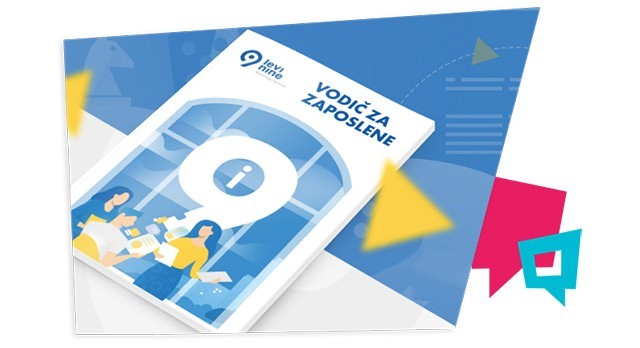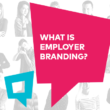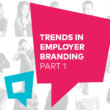Employer Branding— A Matter of Trend or Business Support?
The article was originally published in the December edition of BizLife and on BizLife Portal.
In the past few months, employer branding has become quite a hot topic, not just in the HR community, but also in marketing circles. Is this another trend or the final stage of awareness in terms of employer branding’s importance? All things considered, there are elements of both at play.
The Job Market Dictates Trends
The job market is changing. Gone are the days when strong candidates had to fight for the chance to present themselves to employers and struggled to land a job or prove they are worthy of retaining it. The goal back then was often to “get a position in a public sector, for good”. The process didn’t change much, but the overall situation did, and drastically too. There are still job openings, applications, recruitment, and selection, processes through which employers recruit the candidates.
But, before all that, one important choice takes place— candidates settle on the employers. Namely, talents are the ones who get to choose, and today, their supply is ever more substantial and more competitive. There are also specific industries that are growing faster than the corresponding job markets that can accommodate them. This means the demand for some occupations (programmers, technologists, salesmen, and others) is higher. Lastly, we have various new models of employment that increase the number of entrepreneurs and freelancers who decide to opt-out of the system. Thanks to the internet, the job market is global, and all employers that allow remote work are just a click away.
The takeaway is quality candidates have many options, which also makes it harder to reach them and retain their loyalty. The percentage of workers that occasionally think about changing a job is rising every year. Yes, job offers have changed, but so have the people. Different generations have been shaped by varying conditions that have solidified their values, worldview, and job prospects.

Source: https://www.tphumancapital.com.au/
The job search process resembles a buying journey in which candidates research and gather information on the job. This corresponds to what customers do when purchasing products. And taking into account the younger generations are digital natives, their way of researching and consuming information hinges on digital channels of communication. Candidates investigate and probe the job position. They start from the employer website and then go through social media accounts, forums, specialized sites, and apps (Glassdoor). All this information is accessible and transparent. Thus, currently employed individuals represent media outlets in their own right, ones that candidates trust more than the employer.
In the case, employers don’t sort out their online strategies; the impression candidates get is left to the third parties and outside their control. This could lead to the formation of a company image that isn’t favorable. A planned, strategic approach to employer branding via online channels is the opportunity for employers to showcase their internal ambiance and culture, as well as to highlight the benefits and values that will attract the right candidates. All these changes in the job market have prompted employers to recognize the importance of carrying out employer branding, and hence the heightened interest in the topic. So, we can safely argue that shifts in the job market have caused a general rise in interest for employer branding and launched it into the mainstream. This turn of events is undoubtedly justified and underpinned by strong reasons.
How Does Employer Branding Support Business?
Employer branding helps employers attract and retain quality people and people are the mainstays of any business. Regardless of how good the idea is, employees need to carry it. Activities we conduct externally, which are aimed at the job market, help us position ourselves as desirable employers. This acts as a magnet for reliable candidates but also lowers the costs of recruitment and selection. According to LinkedIn’s research, organizations with robust employer branding cut the related costs by 43%, compared to competitors that are perceived as less desirable. The same document shows their selection process also lasts two times shorter due to receiving more qualified applications faster.
No matter how vital it is for an employer to be well perceived by the public, it’s also paramount how existing employees look at it. Each one of them is a separate media actor that awakens whenever someone asks them “How was at work?” or every time they log in to social media accounts and publish work-related posts.
Furthermore, internal employer branding activities can have a positive impact on employee experience and engagement. Happy workers are more productive and loyal, proud of the organization they work for, and more keen on going above and beyond.
For these reasons, employer branding doesn’t include just marketing activities. It also involves genuine care for the workers, which comes via fostering a healthy work environment, a positive atmosphere, and the creation of conditions that motivate employees to operate at their maximum efficiency. These efforts entice them to become brand ambassadors, ready to promote and recommend an employer.
Challenges of Internal Communication in Employer Branding
There are various tools and tactics that can be very useful in the area of internal communication. Internet is a starting point, a go-to online hub for employees, where they can find handy information and keep up the pace with goings-on. Internet solutions are particularly valuable to big teams because transmitting information to everyone poses a challenge.
Besides that, the internet is an excellent instance for various acknowledgments, accolades, and celebrations of a team and individual achievements. Here, some effective tools for improving internal communication are periodic newsletters, as well as different social media or app groups (Facebook groups, Viber groups for smaller teams). One should not underestimate the power of offline activations either. Imagine reading this article in your office right now, while the physiotherapist massages your neck and shoulders? In all likelihood, you would love to share this moment on social media. It’s even likelier you would share it in your social circles and talk about it. What does it take to make it happen? Well, it takes an idea, a will to find a few local professionals, and then act to surprise your employees pleasantly.
Even the materials that improve internal processes can be useful tool for employer branding. An employee handbook, provided it is creative and innovative, can communicate the culture of an organization, regardless of whether the material is in print or video format. It makes the employee glad to be a part of the team and delivers a message: “you’re in the right place”.

Cover of an employee handbook
Homepage Agency builds a library of employer branding knowledge primarily on foundations of rich practice and experience with projects delivered for some of the most accomplished employers in Serbia. Through an individual, consultancy-based approach, we set goals together, develop strategies, and provide support to implement regular employee branding activities, as well as standalone campaigns.
If you recognize the need for employer branding, we would be happy to meet up and define the optimal route to gaining the status of a good employer.



